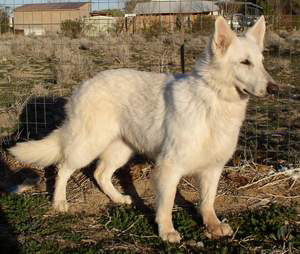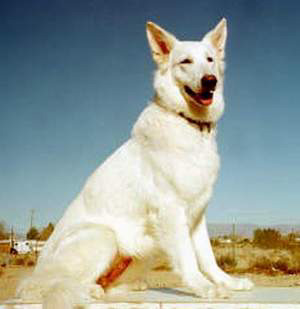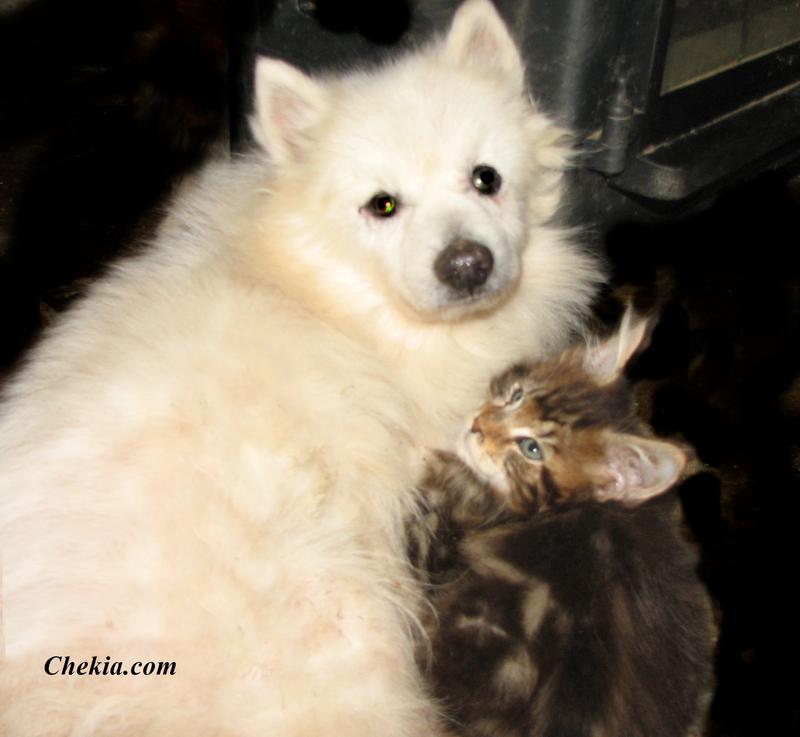VITAMIN C SUPPLEMENTS
There is much controversy about giving extra vitamins or supplements to puppies
There is as many articles for it as against it
There is not enough research done yet to know for sure
Roughly one in four hunting-dog pups become victims of hip dysplasia. Some of these dogs
suffer a lifetime of crippling pain. Others are destroyed. But it is now a virtual certainty that if you
take some preventive measures, your pup will not get hip dysplasia. Is that a strong statement?
Read on, and judge for yourself
Scurvy and Hip Dysplasia
San Jose, California veterinarian Dr. Wendell O. Belfield was visiting a friend. On the table was
a reprinted copy of the 1753 book, "A Treatise On Scurvy", by Captain James Lind, a surgeon in
the British Royal Navy. While waiting for his friend, Dr. Belfield began reading. The symptoms
described were: bleeding gums, loose teeth, foul breath, nose bleeds, swollen eyelids, brittle
bones…And then came an autopsy report made in 1699 at St. Louis Hospital, Paris:
"The ligaments of the joints were corroded and loose. Instead of finding in the cavities of the
joints the usual sweet oil mucilage, there was only a greenish liquor, which by its caustic quality
had corroded the ligaments."
Recognition flashed across Dr. Belfield's mind. This 300-year-old autopsy of a dead human
being described hip dysplasia in dogs. Could chronic hip dysplasia be a form of scurvy?
Simply a lack of vitamin C?
No, it's accepted that a dog's body makes its own vitamin C. Everybody knows that.
Canine hip dysplasia is hereditary. Everybody knows that, too. But why does everybody know
that dogs don't need extra vitamin C? Because back in the 1930s, some dogs in testing
laboratories suffered no ill effects when denied all vitamin C in their diets.
We can't help but observe, however, that very little happens in the controlled environment of an
experimental laboratory that would cause dogs to need more C than its body can manufacture.
In the real world a dogsled racer brought a bitch to Dr. Belfield after other vets in the
San Francisco area had failed to help her. She had a swollen tongue, bleeding gums, and often
fell and dragged herself about with great difficulty.
Dr. Belfield recognized the trouble as scurvy, although not the true clinical scurvy that brings
death to humans. The dog was making enough C to keep the scurvy on a chronic subclinical
level. After a month on ascorbic acid (another name for vitamin C - simply meaning NOT having
scurvy), the bitch could run as long and hard as any dog on the client's team. Why didn't other
members of the racing team have scurvy? They had been eating the same food. This happened
because of another factor usually ignored by those who believe that dogs never need
more C than their bodies make. In one group of 104 dogs tested, vitamin C levels varied
from .02 milligrams per cubic centimeter of blood to .84 milligrams - a 42 fold variable!
Obviously, one dog's body can be starving for C while another dog makes enough to get by.
This variability also leads us to the heredity factor. Breeding programs to eliminate CDH have
worked to a certain degree. For instance, the Wirehaired pointing Griffon breeders eliminated
half of the problem in just ten years through selective breeding. But no breeding program has
come close to being 100% effective. If we assume that Dr. Belfield is right in believing that
hip dysplasia is connected to a vitamin C deficiency, it all begins to make sense. The variable
ability to make ascorbic acid is certainly inheritable. While selecting parents for lack of
hip dysplasia in the heredity, we may have unknowingly selected for the real factor that inhibits
CHD - good vitamin C production.
Nature and Nurture
It seems clear, however, that all CHD is not entirely genetic. Selective breeding has been too
inconsistently successful to believe otherwise. Dr. Belfield says that he constantly sees sound
parents. A Swedish doctor who x-rayed army dogs concluded that dysplastic dogs produce only
ten percent more dysplastic pups than normal dogs. But again, if we accept Dr. Belfield's
vitamin C theory, it all makes sense.
Vitamin C does 300 different jobs in the bodies of animals, including humans. One of the most
important is collagen production. If you think of cells as bricks, collagen would be the mortar.
Without enough collagen, you can't build muscle tissue. You can't build bone, either, because
collagen forms the honeycomb holding the minerals in place in bones. Furthermore, it's possible
to have not quite enough vitamin C to manufacture quality collagen. Weak collagen builds
weak muscles and bones.
A second function of ascorbic acid is to cope with the effects of stress. It does this by nourishing
the adrenal glands and by helping the body produce its own cortisone, which combats
histamines produced by dying cells. A rat can multiply its vitamin C output tenfold when stressed.
Humans can't make any at all, much less increase it, so we must eat all that our bodies need or
supplement our diets. Apparently, our ancestors ate huge amounts of fruit containing vitamin C,
so unlike most animals, our livers didn't develop the ability to turn glucose into ascorbic acid.
Dogs are poor producers. A goat can make five times the vitamin C produced by a dog of equal
size. A rat, small as it is, makes nearly four times the vitamin C produced by a full-grown dog.
I hate the term "conventional wisdom." Too often, it means believing what everybody else
believes, no matter how foolish, for fear of being ridiculed. But in this case, the definition is
accurate. Conventional wisdom has it that dogs need no more vitamin C than their bodies make.
Dr. Belfield asks why, if that is the case, do dogs or wild canines, when left to their own devices,
act like they need more? When possible, canines do eat fruits, berries and vegetation
containing vitamin C.
In my experience, there are two times when dogs eat large amounts of grass and other available
vegetation. One is when they've run long and hard, and there's no water to be found. At such
times, they chew and swallow vegetation for the moisture. The other time is when they've been
kenneled too long. Even some hard-running bird dogs and hounds often stop and eat green
vegetation before taking off to hunt. We've always wondered why. We even thought up several
explanations, but they didn't ring true. Could this simply be caused by a need of additional
vitamin C?
Keep in mind that there is no extra vitamin C in most commercial dog foods. That's not a
criticism, either. Ascorbic acid oxidizes rapidly when the lid is off the container. It probably would
oxidize rapidly as a minor ingredient in a large bag of food. Also the high heat during the
extruding process would probably destroy most of the vitamin C added to the food.
One manufacturer that does add ascorbic acid makes no claims for its benefits, nor is the
amount specified or guaranteed to be in the bag.
To sum up so far, our dog is a poor producer of vitamin C, there is no extra C in his usual food,
and like us, he needs far more in proportion to size than we do to achieve normal growth.
While our growth is stretched out over two decades, most of theirs takes place during the first
year. The bigger the breed or strain, the more rapid the growth, and the greater the demand for
ascorbic acid, the greater the incidence of hip dysplasia.
Dr. Belfield suggests that we should also consider the stress assault on a domesticated pup.
It's weaned, separated from its mother and littermates, involuntarily carried to a new and
unfamiliar location, stuck with needles, mildly poisoned to eliminate worms, and possibly
operated on to remove dewclaws or part of the tail. All of this happens while the animal is
already stressed by teething and phenomenal growth. The growth factor induces a very high
demand for ascorbic acid through additional stress and the massive need for collagen.
The wild canine pup, by contrast, stays with its mother, keeps its tail and dewclaws, suffers no
early separation, is not hurt by hypodermic needles, and has not been bred overlarge by foolish
humans. Diseases and worms are its stresses. But the wild pup does get extra vitamin C from
the livers of animals the mother kills, some green vegetation, and sometimes from fruits and
berries. The domestic pup gets none because we have decided that he doesn't need any.
Our pup - in a condition perhaps bordering on subclinical scurvy - runs, plays and jumps with
muscles and bones weak from lack of quality collagen. Muscle growth may not be keeping pace
with bone growth. The pectineus muscles become taut. Suddenly, during one great leap or
unusual jolt, the weak muscles fail, and the balls of the leg bones are pulled away from the hip
sockets. The lubricating synovial fluid leaks out, and the balls grate on the sockets. In hours,
maybe less, the dog has hip dysplasia. It will not recover.
The Solution
Dr Belfield thought that the solution was obvious. Prevent hip dysplasia by supplying enough
vitamin C. He tried it with several litters of German Shepherd pups, a breed with serious
CHD problems. The parents either had hip dysplasia themselves or they had already produced
dysplastic pups.
The first bitch had very bad hips, and according to Seeing Eye dog standards, should have
been neutered to prevent damaging pregnancy. Dr. Belfield gave her 2,000 milligrams (2 grams)
of C daily as soon as she was pregnant. Eight pups were born, and they were given
50 to 100 milligrams of liquid C from birth until weaned. From that point to four months,
550 milligrams of powdered C were added to their food. This was increased to 1,000 milligrams,
then 2,000 until the pups were 18 to 24 months old. None of the pups were dysplastic.
Another bitch had been bred twice to different studs that were certified free of CHD. Each time,
half of her pups were dysplastic. She was bred again and vitamin C was administered under
Dr. Belfield's guidance. She produced eleven pups with perfect hips. In all, eight litters were
handled in this manner over a five-year period. When x-rayed at two years of age, all pups
were free of CHD.
The testing ended in 1976, and as far as Dr. Belfield was concerned, the CHD threat was
defeated. He published a paper in a professional journal. Was it truly over? Hardly. Dr. Belfield
had attacked the popular genetic theory that everyone "knew." Instead of simply trying the
treatment and finding out for themselves, most of the professionals ridiculed Dr. Belfield for not
conducting a better experiment with double blinds (some dogs not given C). He was even called
a crook and a charlatan.
"That really hurt," Dr. Belfield told me. "I'm just a little one-man practitioner who looked for better
ways when conventional means weren't working. Proof is up to the universities. I really want to
help these animals, not wait around for further proof while the dogs suffer."
Those are my sentiments exactly. Dr. Belfield has since upped the dosage of C somewhat and
has combined it with other vitamins and minerals. He also mixed some with Ester-C.
I'm currently testing both mixtures on hard-running Fox Hounds.
Whatever you do, if you're raising a litter, provide the needed vitamin C. If you're buying a pup,
put it on the C the moment you take it home. There's no sense risking hip dysplasia just because
absolute proof hasn't yet been established or seriously attempted.
**Reprinted from "Outdoor Life"
I was privileged to know and work with Dr. Wendell Belfield DVM during the time he had his practice in San Jose, CA.
He was a brilliant doctor and researcher, as well as a compassionate animal caretaker. When I initially created my
website many years ago, I included a link to his study on hip dysplasia which had been published in a major veterinary
journal. In more recent years, however, I have found this study (among others that openly conflict with the mercenary
agenda of the powers that be) to have been scrubbed from the internet. So when I finally found a well researched
article relating to Dr. Belfield's study, rather than simply link to it, I copied and posted it here. I do not know the author
of this article, only that it was published in Outdoor Life Magazine. If anyone reading this does know the author,
please let me know so I can give that person due credit. Thank you. - Terry Thistlethwaite
The Truth About Hip Dysplasia
 | ||||||
 | ||||||
 | ||||||
 | ||||||
 | ||||||
 | ||||||



